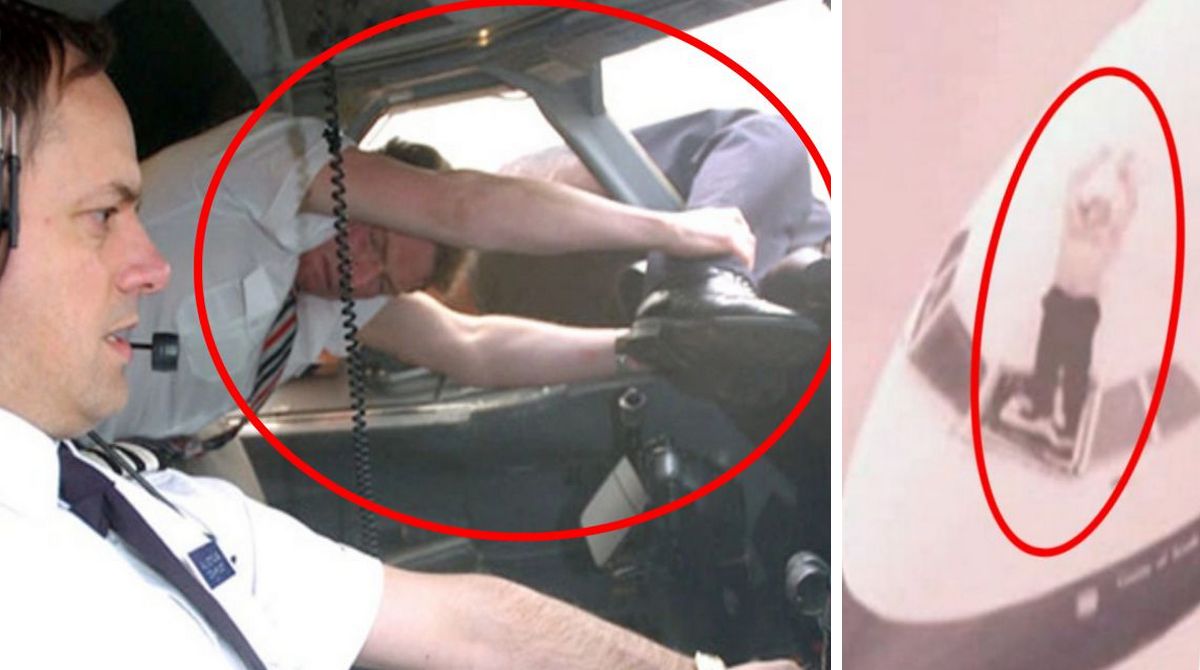The incredible story of how the pilot of British Airways survived after being sucked out of the cockpit window at an altitude of 5 km, was told to its readers by The Sun newspaper. The disaster, similar to an adventure film, happened about 30 years ago, on June 20, 1990, and became the subject of a documentary film, but all the details were unknown for a long time and became available to the public only now. What is separately interesting is that the participants in this story not only survived but also returned to the ranks.
Yes, the airliner of the British carrier was on a flight from Birmingham to Malaga, but about 13 minutes into the flight, when the airliner was flying over Oxfordshire, there was a sound that was initially mistaken for an explosion. And two of the six cabin windows broke into small fragments and flew overboard. Captain Tim Lancaster was thrown from his seat and thrown from the window of the BAC-111 at an altitude of 17,300 feet (that’s about 57,000 meters). The sudden decompression also blew the cockpit door off its hinges, nearly knocking flight attendant Nigel Ogden down, but he managed to break into the cockpit and grab the pilot’s legs, who were being sucked out of the window.
“I had just come out with my hand on the handle when there was a loud explosion and the door flew out of my hands. I thought, “Oh my God, this is the bomb.” When I turned around, I saw that the windshield was gone and Tim, the pilot, was flying through it, being sucked out of his seat despite his seat belt, and all I could see were his legs. I jumped over the helm and grabbed his waist so that he wouldn’t fly away,” the flight attendant said later. Then the second crew member John Heward joined the rescue, who ran into the cockpit and grabbed the pilot by the belt.
His face was banging against the window, blood was pouring from his nose and head, and his arms were dangling and seemed to be about six feet long. Most terrifyingly, his eyes were wide open. I will never forget this sight as long as I live,” says the first of them
Meanwhile, the autopilot disengaged, and the plane raced downward at a speed of almost 650 km/h. But co-pilot Alistair Atchison managed to intervene in the matter and took control. He urged both rescuers not to let the captain go, as he would not only die, but his body could seriously damage the plane. Another flight attendant named Simon strapped himself into the co-pilot’s seat and helped hold the chain of men.
“God knows how, but while all this was happening, Alastair managed to take control of the plane and sound the alarm,” added the narrator. The second pilot managed to descend to a height where everyone could breathe and prepare for an emergency landing. The passengers – and there were 81 people on board – were looked after by the remaining stewardess. At the same time, what was taken as an explosion on board was heard by everyone? The plane landed at Southampton Airport, where they were met by fire crews and ambulances.
“Unbelievably, the pilot only suffered frostbite and a few fractures and lacerations. The first steward also had to be treated for injuries and frostbite,” the publication adds. Remarkably, all participants returned to the air within weeks or months. The “exhausted” captain himself returned to work six months later and flew until 2003. All passengers remained unharmed.
As it turned out, the cause of the accident was not an explosion, but a technical error. According to the Aviation Accident Investigation Branch report, 27 hours before the flight, a mechanic used the wrong bolts to secure the windshield.

